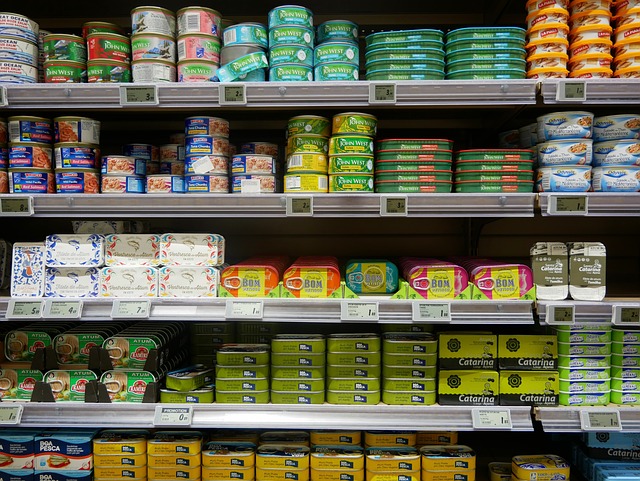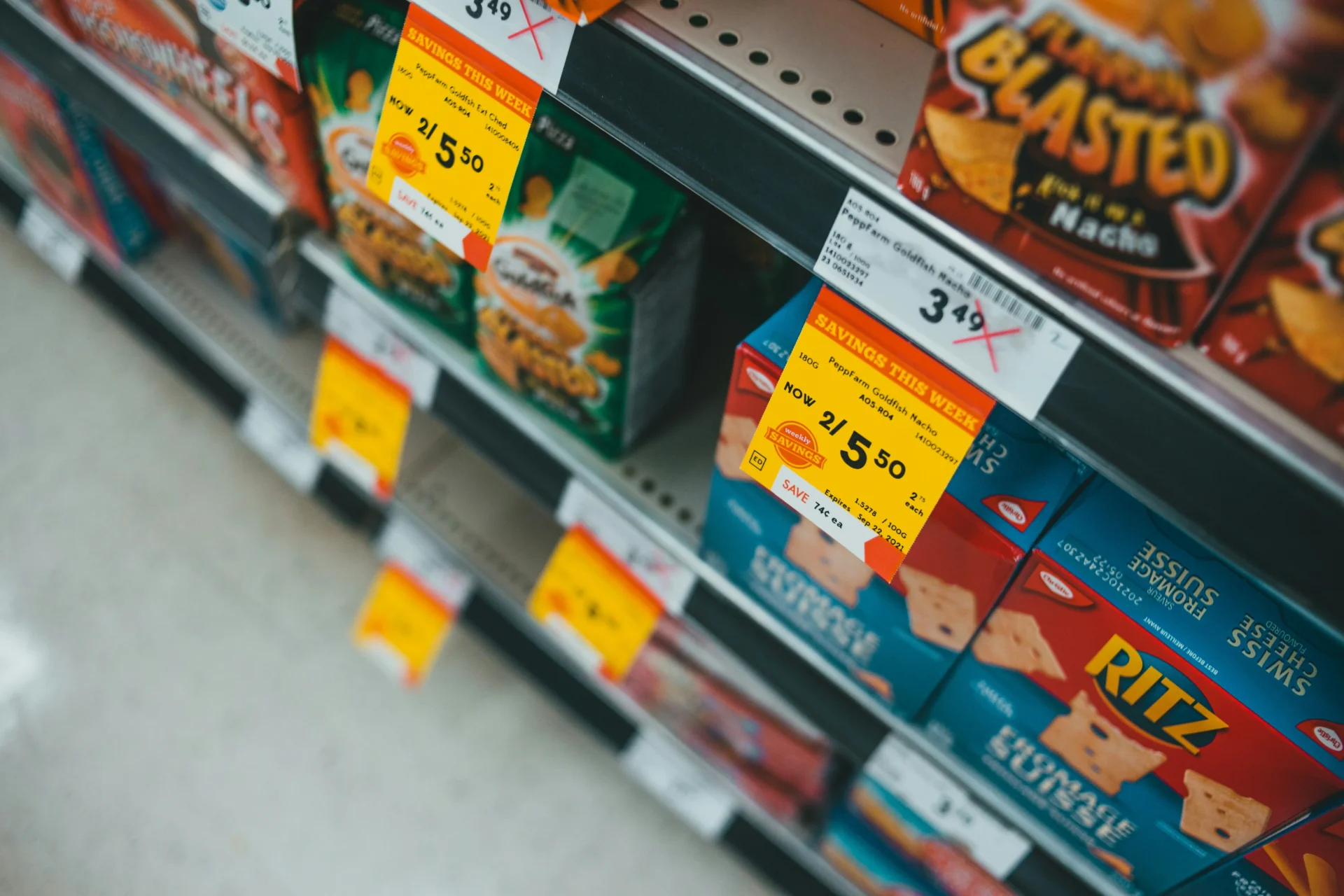Pricing can make or break a consumer packaged goods (CPG) brand. In a highly competitive market, a well-crafted CPG pricing strategy is essential for driving sales, maintaining profitability, and sustaining long-term growth. Consumers don’t just buy based on price alone—they consider perceived value, brand positioning, and competitive alternatives. A misstep in pricing can lead to lost revenue or diminished market share. That’s why brands must develop a data-driven approach, balancing costs, competition, and consumer behavior. This guide explores the key factors shaping CPG pricing and how companies can implement strategies that drive success.
Mastering pricing requires more than just adjusting numbers—it demands a strategic, market-aware approach. Companies must account for production costs, competitor pricing, and shifting consumer preferences to remain competitive. Additionally, promotional tactics, dynamic pricing models, and value-based strategies can enhance brand positioning and maximize margins. With evolving market trends and increasing price sensitivity, brands must continuously refine their pricing approach. The right strategy doesn’t just boost revenue; it strengthens brand loyalty and market dominance. Let’s dive into the core principles of CPG pricing and how you can leverage them for long-term success.
Understanding CPG Pricing Strategy
A well-crafted CPG pricing strategy is the foundation of a brand’s profitability and market positioning. Pricing is more than just assigning a number to a product—it’s about aligning costs, consumer expectations, and competitive pressures. Companies must consider factors like production expenses, distribution costs, and brand perception when setting prices. Additionally, pricing influences how consumers perceive value, impacting their willingness to buy. A strategic approach ensures that a product remains competitive without sacrificing margins. This balance is crucial in the highly dynamic CPG industry.
The best CPG pricing strategy adapts to market trends and consumer behavior. Prices should reflect demand, seasonal shifts, and economic conditions to maintain sales momentum. For instance, a brand may use premium pricing to highlight exclusivity or penetration pricing to capture market share. Consumer insights and CPG market research help businesses determine the right pricing approach. Ignoring these factors can lead to lost revenue or decreased brand trust. Therefore, companies must continuously evaluate and refine their pricing models.
A dynamic pricing strategy also accounts for external pressures such as supply chain disruptions and inflation. These factors can directly impact production costs, forcing brands to adjust pricing to maintain profitability. Retail partnerships further complicate pricing decisions, as different channels may require tailored CPG retail marketing services. Online marketplaces, for example, often demand competitive pricing due to instant price comparisons. Digital shelf optimization is also needed. Meanwhile, traditional retail stores may focus on in-store promotions to drive sales. Understanding these nuances ensures that companies set prices that sustain both short-term success and long-term growth.
Key Factors Influencing Pricing Decisions
A successful CPG pricing strategy depends on several key factors, with production costs being a primary consideration. Raw materials, manufacturing, packaging, and logistics all influence the final price. Companies must strike a balance between covering expenses and maintaining competitive pricing. Cutting costs too aggressively can compromise product quality, while high prices may drive customers to competitors. Additionally, businesses should consider operational efficiencies to minimize unnecessary expenses. A well-optimized supply chain can help CPG brands maintain stable pricing even during market fluctuations.
Competitive analysis is another crucial factor in a strong CPG pricing strategy. Understanding how rival brands price their products helps businesses position themselves effectively. Some brands may opt for price matching, while others differentiate through premium pricing or bundling strategies. Monitoring competitor movements ensures that a brand remains relevant in a fast-changing market. Price wars, however, can be risky, leading to reduced margins and eroding brand value. Instead, brands should focus on providing unique value that justifies their pricing.
Consumer perception also plays a vital role in pricing decisions. A price that is too low may suggest inferior quality, while a higher price may indicate premium value. Businesses must understand their target audience and what price points they are willing to accept. Psychological pricing tactics, such as ending prices in .99 or offering tiered pricing options, can influence buying behavior. Furthermore, external factors like inflation, economic downturns, or changing consumer preferences can shift pricing dynamics. Brands that stay attuned to these factors can proactively adjust their pricing to maintain demand and profitability.

Leveraging Market Research for Pricing Optimization
Market research is the backbone of an effective CPG pricing strategy. It provides data-driven insights into consumer behavior, industry and CPG digital trends, and competitor pricing models. By analyzing market demand, businesses can determine optimal price points that maximize sales while maintaining healthy margins. Surveys, focus groups, and historical sales data all contribute to a deeper understanding of what consumers are willing to pay. Additionally, research helps brands anticipate seasonal trends and potential economic shifts. The more informed a pricing decision is, the better positioned a brand is for long-term success.
Competitive pricing analysis is a crucial aspect of market research. Studying competitor pricing structures helps companies determine whether they should price above, below, or at par with competitors. Some brands use dynamic pricing, adjusting prices based on demand fluctuations or competitor movements. Others leverage value-based pricing, setting prices based on perceived consumer benefits rather than production costs alone. Additionally, tracking promotions and discounts from competitors helps brands refine their own pricing strategies. Without this analysis, companies risk mispricing their products and losing market share.
A data-driven CPG pricing strategy also relies on price elasticity testing. This involves experimenting with different price points to measure consumer responsiveness. By analyzing how changes in price impact demand, companies can determine the most profitable pricing range. CPG digital analytics tools and A/B testing provide valuable insights into which pricing models perform best. Additionally, brands can use predictive analytics to forecast future pricing trends based on historical data. Leveraging these research techniques ensures a pricing strategy remains effective in an ever-changing market.
The Role of Promotions and Discounts in Pricing Strategy
CPG digital marketing through promotions and discounts play a critical role in shaping an effective CPG pricing strategy. Temporary price reductions can boost sales, attract new customers, and encourage repeat purchases. However, frequent discounting can erode brand value and train consumers to wait for sales instead of buying at full price. To strike a balance, brands should use promotions strategically, aligning them with product launches, seasonal demand, or competitive market movements. Limited-time offers create urgency, while loyalty programs incentivize long-term customer engagement. A well-planned promotional strategy can enhance sales without compromising profitability.
Discounts must also align with the overall CPG pricing strategy to ensure sustainable revenue. While short-term promotions can drive volume, they should not lead to price wars that lower overall industry profitability. Instead, brands can use tiered pricing, bundling, or value-added offers to maintain perceived value. For instance, offering a “buy one, get one” deal can encourage bulk purchases without slashing individual unit prices. Additionally, data-driven discounting ensures that price reductions target the right customer segments. Personalized promotions based on past purchase behavior can increase conversion rates and customer loyalty.
Digital channels have transformed how brands implement discounts and promotions. E-commerce platforms allow for dynamic pricing adjustments based on real-time demand and competitor movements. Subscription-based pricing models, such as auto-replenishment discounts, also provide long-term value while ensuring recurring revenue. Even CPG Digital Ads play a major role. Moreover, influencer and affiliate marketing campaigns can enhance promotional efforts without relying solely on price reductions. The key is to use promotions as a strategic tool rather than a reactive measure. When executed effectively, promotions support growth while preserving brand integrity and profitability.
Adapting Pricing Strategies for Different Sales Channels
A successful CPG pricing strategy must adapt to various sales channels to maintain competitiveness and profitability. Traditional retail, e-commerce, and direct-to-consumer (DTC) models each require tailored approaches. Brick-and-mortar stores often rely on promotional displays, in-store discounts, and retailer-specific pricing agreements. Meanwhile, online marketplaces prioritize competitive pricing, dynamic adjustments, and personalized offers. CPG brands must balance these channel-specific demands while maintaining consistent value perception across all platforms. An inconsistent pricing approach can lead to consumer confusion and weaken brand trust.
E-commerce has introduced new complexities to CPG pricing strategy. Online shoppers have instant access to price comparisons, making CPG shopper marketing competitive pricing essential. Many brands use dynamic pricing algorithms to adjust prices based on demand, competitor pricing, and customer behavior. Subscription models and exclusive online discounts also help brands differentiate their offerings in the digital space. Additionally, shipping costs and fulfillment fees must be factored into online pricing. Failure to account for these costs can lead to reduced margins and lower profitability.
DTC channels provide greater pricing control but require strategic execution. By selling directly to consumers, brands can avoid retailer markups and offer exclusive pricing structures. However, they must also invest in digital marketing solutions for CPG brands, fulfillment logistics, and customer acquisition strategies. Pricing in DTC channels should reflect the added value of direct engagement, such as personalized experiences or premium packaging. Additionally, hybrid models—where brands operate across retail, e-commerce, and DTC—require consistent pricing strategies to prevent channel conflicts. A well-integrated pricing approach ensures that consumers perceive value regardless of where they purchase.

Using Technology and Data Analytics for Smarter Pricing
Technology and data analytics have become essential tools for refining CPG pricing strategy. Pricing decisions are no longer based on guesswork but on real-time data insights. Advanced pricing software allows brands to analyze market trends, monitor competitor pricing, and track customer purchasing behaviors. By leveraging AI-driven tools, companies can predict demand fluctuations and adjust prices accordingly. Predictive analytics help businesses anticipate peak sales periods and optimize pricing strategies in advance. As a result, brands can maintain competitive pricing while maximizing profitability.
Data-driven CPG pricing strategy also enhances personalization and segmentation. Brands can use consumer data to offer targeted discounts, loyalty-based pricing, geographic-based pricing adjustments, and improve CPG brand marketing experience. Machine learning algorithms analyze purchasing history to determine which pricing models work best for different customer segments. This approach ensures that promotional efforts are efficient and tailored to maximize conversion rates. Additionally, brands can use A/B testing to evaluate how different pricing structures impact sales performance. By continuously testing and refining pricing, businesses can maintain an adaptive and profitable pricing model.
Automation further streamlines pricing management across multiple channels. Dynamic pricing tools allow brands to adjust prices in real time based on stock levels, competitor pricing, and market demand. E-commerce platforms, in particular, benefit from these automated solutions, ensuring pricing remains competitive without constant manual adjustments. Additionally, technology enables brands to track the impact of discounts and promotions more effectively. Investing in data analytics and automation not only optimizes pricing strategies but also enhances overall business efficiency.
Balancing Profitability and Customer Perception in Pricing
A strong CPG pricing strategy must balance profitability with customer perception. While maximizing revenue is essential, pricing should not alienate customers or create a perception of unfairness. Consumers associate price with value, and sudden price increases can lead to backlash. Transparent pricing communication helps build trust, especially when external factors like inflation necessitate adjustments. Additionally, CPG brands must consider price elasticity—how price changes impact demand—to avoid significant drops in sales. Striking the right balance ensures that brands remain competitive while maintaining strong customer relationships.
Customer perception plays a crucial role in pricing success. If a product is priced too low, it may be seen as low quality, while overly high prices can limit accessibility. Value-based pricing strategies help brands align pricing with consumer expectations. For instance, premium brands justify higher prices through superior ingredients, sustainability efforts, or unique features. On the other hand, budget-friendly brands focus on affordability while maintaining acceptable quality standards. By clearly communicating value, businesses can reinforce their pricing decisions and strengthen brand loyalty.
Long-term profitability depends on sustainable pricing practices. Relying too heavily on discounts can undermine profitability and set unrealistic expectations among consumers. Instead, brands should gradually adjust pricing in response to cost changes and market dynamics. Monitoring consumer feedback and sales data helps businesses fine-tune their pricing approach. Additionally, brands can introduce tiered pricing models to cater to different customer segments without devaluing their products. A well-balanced pricing strategy ensures profitability while maintaining a positive consumer experience and improving CPG brand management.
Final Thoughts
A well-executed CPG pricing strategy is a powerful driver of profitability, brand positioning, and long-term sustainability. By balancing costs, competition, and consumer perception, brands can set prices that maximize revenue while maintaining strong market appeal. Pricing decisions should not be static; instead, they must evolve in response to shifting market trends, consumer behaviors, and external economic conditions. Leveraging data analytics, dynamic pricing models, and promotional strategies ensures that brands stay ahead of the competition without sacrificing margins. A thoughtful, strategic approach to pricing fosters brand loyalty, enhances customer trust, and strengthens a company’s market presence.
If navigating the complexities of CPG pricing feels overwhelming, expert guidance from fishbat, a premier digital marketing agency in New York, can make all the difference. We specialize in developing and implementing data-driven strategies that drive real results. Whether you’re looking to refine your pricing model, optimize your promotional tactics, or strengthen your digital marketing efforts, our team is here to help. Contact us today at 855-347-4228 or hello@fishbat.com for a free consultation, and let’s work together to build a pricing strategy that maximizes your brand’s success.


